Reatorative Dentistry
Restorative dentistry is a field dedicated to restoring, replacing, and enhancing the function and aesthetics of damaged, decayed, or missing teeth. Whether you're facing cavities, fractured teeth, or the loss of multiple teeth, restorative dentistry offers comprehensive solutions that not only restore your smile but also improve your overall oral health.
Modern restorative dentistry ensures that your teeth and smile are functional, beautiful, and healthy. With advances in materials and techniques, these treatments provide long-lasting results, giving patients renewed confidence in their appearance and dental function.
What is Restorative Dentistry?
Restorative dentistry involves various procedures that help restore the structure and appearance of damaged or missing teeth. The goal is to repair dental issues such as decay, trauma, or tooth loss, and replace missing teeth with durable, natural-looking solutions. It encompasses a range of treatments from fillings to implants, crowns, bridges, and dentures.
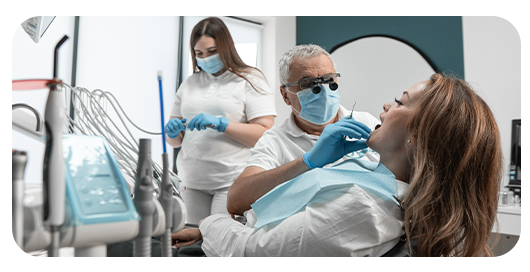
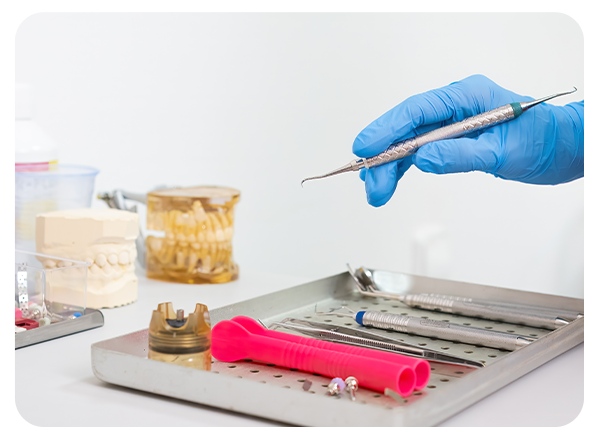
Common Procedures in Restorative Dentistry
Restorative dentistry covers a variety of procedures designed to restore both the function and appearance of your teeth. Some of the most common treatments include:
- 🪥 Fillings: Used to fill cavities and restore the tooth’s shape and strength, typically made from composite resins or porcelain for a natural look.
- 👑 Crowns: A cap placed over a decayed or damaged tooth to restore its size, strength, and appearance.
Bridges: A solution for replacing one or more missing teeth by using adjacent healthy teeth or implants to anchor a bridge. - 🛠️ Implants: Titanium posts surgically placed into the jawbone to support a prosthetic tooth or bridge.
- 🦷 Dentures: Removable appliances that replace multiple missing teeth, available as partial or full dentures.
- 🧪 Root Canals: A procedure used to save a severely decayed or infected tooth by removing the damaged pulp and sealing the tooth.
Benefits of Restorative Dentistry
Restorative dentistry offers numerous benefits that extend beyond aesthetics. Some key advantages include:
- 🔧 Improved Function: Restored teeth enhance your ability to chew, speak, and smile comfortably.
- 🎨 Natural Appearance: Modern materials such as porcelain and composite resins provide a seamless blend with natural teeth.
- 🛡️ Durability: Most restorative treatments are designed to last many years, especially when properly cared for.
- ⛑️ Prevention of Further Damage: Addressing dental issues early can prevent more serious problems like tooth loss, gum disease, or bone deterioration.


Dental Implants: The Gold Standard for Tooth Replacement
Dental implants are one of the most advanced restorative procedures available. They replace missing teeth by placing a titanium post into the jawbone, which integrates with the bone over time (osseointegration).
A crown is then placed on top of the implant, creating a functional and natural-looking tooth. 🪄
🛠️ Implants are durable, long-lasting, and help prevent bone loss, making them an excellent solution for patients with missing teeth.
Crowns and Bridges: Restoring Strength and Appearance
- 👑 Crowns: These tooth-shaped caps are placed over damaged teeth to restore their structure, strength, and appearance. Crowns are often used for teeth that are severely decayed, cracked, or weakened after a root canal.
- 🌉 Bridges: If you’re missing one or more teeth, a dental bridge can replace them by anchoring to adjacent healthy teeth or implants. Bridges help maintain the shape of your face, restore your ability to chew, and prevent the remaining teeth from shifting.
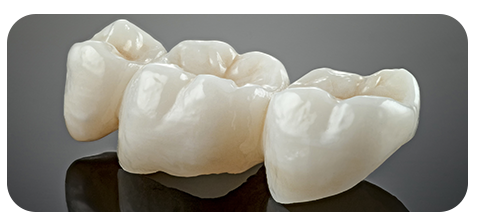
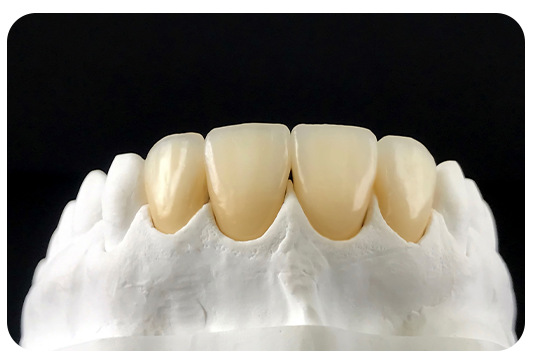
Full and Partial Dentures: A Comfortable Solution for Missing Teeth
Dentures are removable prosthetic devices that replace missing teeth. There are two types:
- 😀 Full Dentures: These are used when all the teeth in a dental arch are missing. Full dentures restore both function and aesthetics, providing a natural-looking smile.
- 🧩 Partial Dentures: These are used when some natural teeth remain. Partial dentures fill in the gaps created by missing teeth, offering both cosmetic and functional benefits.
Root Canal Therapy: Saving Your Natural Teeth
Root canal therapy is a restorative treatment used to save teeth that have become infected or severely decayed. 🦠
The procedure involves removing the infected pulp from the tooth’s interior and sealing it to prevent further infection.
🛡️ After a root canal, the tooth is typically restored with a crown for added protection and strength.
✅ This treatment allows you to keep your natural tooth rather than opting for extraction.

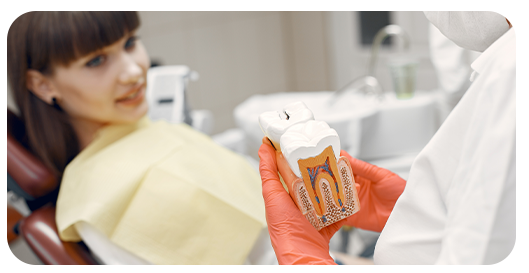
Preventing Tooth Loss with Restorative Dentistry
Restorative dentistry not only helps replace lost teeth but also prevents future tooth loss by addressing dental problems early. ⏳
Treatments such as dental implants and crowns prevent further damage by preserving the surrounding teeth and jawbone. 🦷🛡️
🧼 Maintaining good oral hygiene and seeking timely restorative treatment can help keep your smile healthy for many years. 😁
Choosing the Right Restorative Treatment for You
Choosing the right restorative treatment depends on the specific dental issue you’re facing, as well as your personal preferences and oral health goals. A thorough examination and consultation with a skilled dentist is essential to determine the most suitable treatment plan tailored to your needs. Depending on the condition of your teeth and gums, your dentist may recommend one or more of the following: With the right approach, restorative dentistry can significantly improve both the function and aesthetics of your smile — giving you comfort, confidence, and long-term oral health.🔍 Comprehensive Consultation
🛠️ Treatment Options
😊 Benefits of the Right Choice

Frequently Asked Questions
Dental floss is essential for oral health because it cleans areas where your toothbrush
cannot reach—specifically between teeth and under the gumline. Without flossing, plaque
buildup can cause gum disease, cavities, and bad breath.
Tip:
Make flossing a daily habit, especially before bedtime, to remove the day's accumulated
debris and bacteria.
Proper care after extraction helps prevent complications:
• Keep the gauze pad in place and bite down gently to stop bleeding
• Avoid spitting, rinsing forcefully, or using straws for the first 24 hours• Refrain from smoking as it hinders healing
• Eat soft, cool foods and avoid the extraction site while brushing
Sticking to these precautions promotes healing and prevents conditions like dry socket.
Common mistakes in tooth brushing can harm oral health. These include:
• Brushing too hard, leading to enamel wear and gum irritation
• Using a toothbrush with hard bristles
• Neglecting to brush for at least two minutes
• Overlooking the gumline and tongue
Correct Technique:
Use a soft-bristled toothbrush at a 45-degree angle to the gums. Apply gentle, circular
motions and avoid scrubbing aggressively. Ensure you brush all surfaces of the teeth,
including the back and chewing surfaces.
Gum recession occurs when the gums pull away from the teeth, exposing roots and causing sensitivity. Treatment Options: • Deep cleaning (scaling and root planning) • Gum graft surgery in severe cases • Use of desensitizing toothpaste to manage symptoms Early treatment helps preserve gum health and prevent tooth loss.
Pregnancy can affect oral health due to hormonal changes, increasing the risk of: • Gum inflammation (pregnancy gingivitis) • Pregnancy tumors (harmless overgrowths on gums) • Enamel erosion from morning sickness Maintaining regular brushing, flossing, and safe dental check-ups during pregnancy is crucial for both mother and baby’s health.
